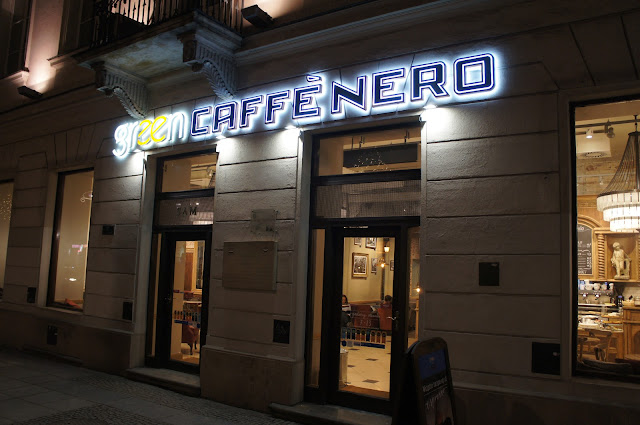JACOB JR, MY JEWISH WORLD. LUBLIN/POLAND


The Railway Station. The original, outstanding edifice of the train station was built according to W. Lanci's design in the years 1875-1877, and then remodelled in 1893 following J. Olbrycht's designs. The present-day exterior of the building, featuring elemnts typical of a manor house, is a result of the rebuilding in the years 1923-24 based onn J. Muller's design.
Jews have likely appeared here inn the 14th c. but a organised Jewish community was probably founded only in the first half of the 15th c. Its members were banned from settling to within the city walls, so the 'Jewish town' developed in the area surrounding the castle. In its area there were nine Synagogues, the most important of witch being the 'Maharshal-shul' (the site, to the north of the castle, is now commerorated by a small oblisque and a plaque).
 |
| DONJON - THE OLDEST BRICK BUILDING ON CASTLE HILL (13TH CENTURY). |

 Lublin Castle, the 13th century donjon and the 14th century Holy Trinity Royal Chapel form a historical complex of Castle Hill. The brick building of the castle was erecred during the reign of King Casimir the Great (14th century). In the years 1823-1826, it underwent a reconstruction aimed to accomodate a prision and acquired its present neo-Gothic structure. Today the castle houses the Lublin Museum.
Lublin Castle, the 13th century donjon and the 14th century Holy Trinity Royal Chapel form a historical complex of Castle Hill. The brick building of the castle was erecred during the reign of King Casimir the Great (14th century). In the years 1823-1826, it underwent a reconstruction aimed to accomodate a prision and acquired its present neo-Gothic structure. Today the castle houses the Lublin Museum.The heyday of the community came in the 16th c., when along with the Krakow, Lwow and Poznan ones, it was one of the largest communities of the Republic. At that time a printing press functioned here, and first of all the famous Yeshiva. It was then that the city became the most frequent place of the sessions of the 'Council of the Four Lands' (Vaad Arba Arcot). At the tun of the 19th c. Lublin becomes one the most immportantChassidic centres in Poland, centred around Jaakow Icchak Horowic, know as the 'Seer'. In the 1930s another famous Yeshiva was founded in Lublin by Meir Szapiro, in which Jews from all over Europe studied. Painters such as Symcha Trachter, Henryk Lewensztadt and Jehuda Razgour were also connected with Lublin.
 |
| MAIN GATE TO THE JEWISH GUETTO |
 |
| JUDENGASSE |
 |
| PLAC ZAMKOWY |
 The area was surrounded with a wall and a Memorial Hall built commemorating the 'little guetto' at Maidan Tatarski. Near by, at the juncture of Lubartowska and Unicka Streets, the building of the former Yeshiva can be seen. At 8 Lubartowska St. is the former prayer house of the 'Hewra Nosim' Funeral Society, containing a prayer room and a Memorial Chamber of the Lublin Jews (available to sightseers on Saturdays and Sundays). In the old town Jewish history and culture (the Jewish quater, the 'Seer's house, the guetto victims, the great Syangogue, the Perec house, an orphanage, a hospital). Old photographs of the Jewish quarter and a model of the pre-war Old Town can be seen in the Brama Grodzka Center - the NN Theatre (21 Grodzka st.) In the former death camp of Majdanek a Martyrology Museum can be visited.
The area was surrounded with a wall and a Memorial Hall built commemorating the 'little guetto' at Maidan Tatarski. Near by, at the juncture of Lubartowska and Unicka Streets, the building of the former Yeshiva can be seen. At 8 Lubartowska St. is the former prayer house of the 'Hewra Nosim' Funeral Society, containing a prayer room and a Memorial Chamber of the Lublin Jews (available to sightseers on Saturdays and Sundays). In the old town Jewish history and culture (the Jewish quater, the 'Seer's house, the guetto victims, the great Syangogue, the Perec house, an orphanage, a hospital). Old photographs of the Jewish quarter and a model of the pre-war Old Town can be seen in the Brama Grodzka Center - the NN Theatre (21 Grodzka st.) In the former death camp of Majdanek a Martyrology Museum can be visited.Grodzka Gate. Built in the 14th c. together with the city walls, the gate owes its present appearance to the 1785 reconstruction, designed by Domenico Merlini, during which it lost its defensive function and became a residential building. Nowadays its home to the Grodzka Gate - NN Theatre.

Cracow Gate. Built after 1341 as an entrance gate from the direction to Cracow, it served defensive, commercial and housing functions. The restoration carried out in the years 1959-1964 gave the gate its current appearance. The wall facing the Old Town has the painting of St Anthony, the city's patron saint since 1839. Presently the building is home to the Lublin History Museum.
 I would like to say thanks to the staff - Marcin and Antoni - of the Tourist Information Officce/Lublin.
I would like to say thanks to the staff - Marcin and Antoni - of the Tourist Information Officce/Lublin.Shalom! Aleichem.
Suporte cultural: SOUL avec L'Integration d'Association avec Israel et dans le Monde/Fr .










Comments
Post a Comment